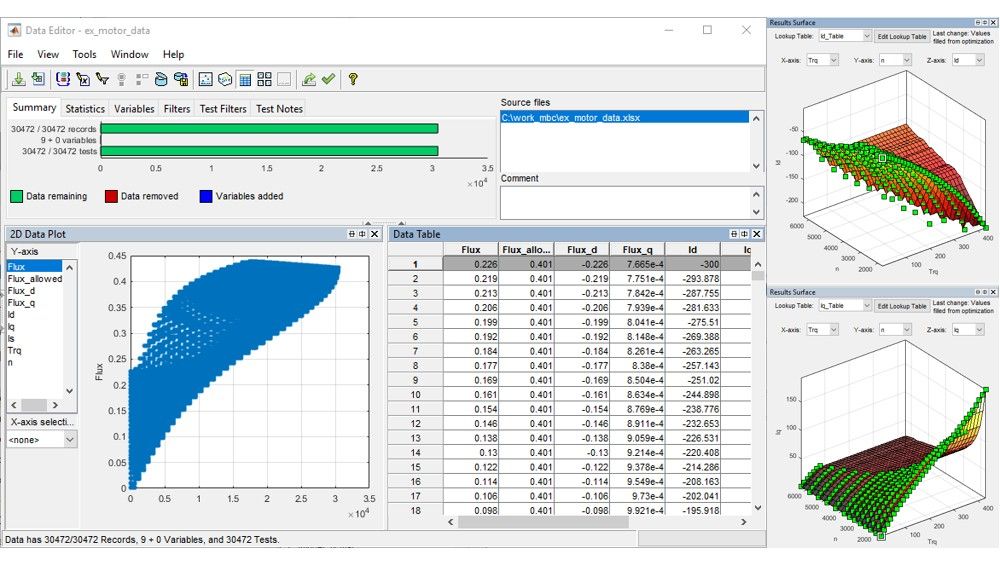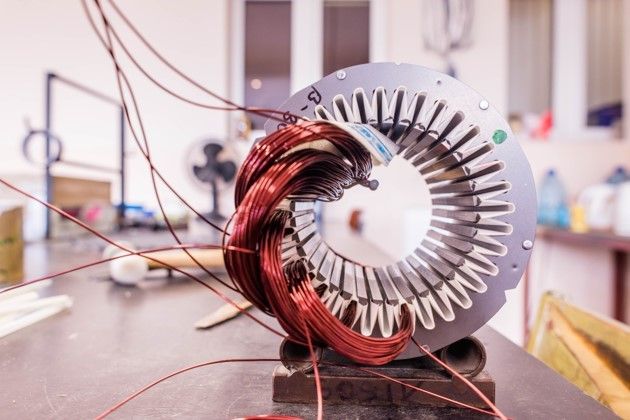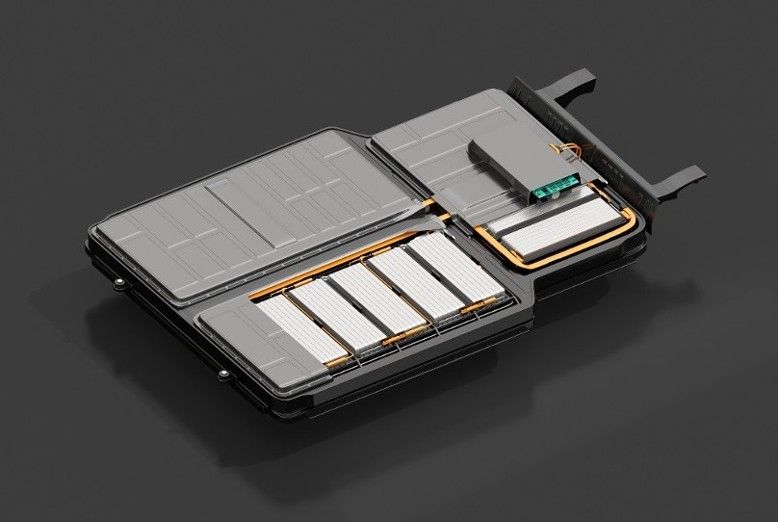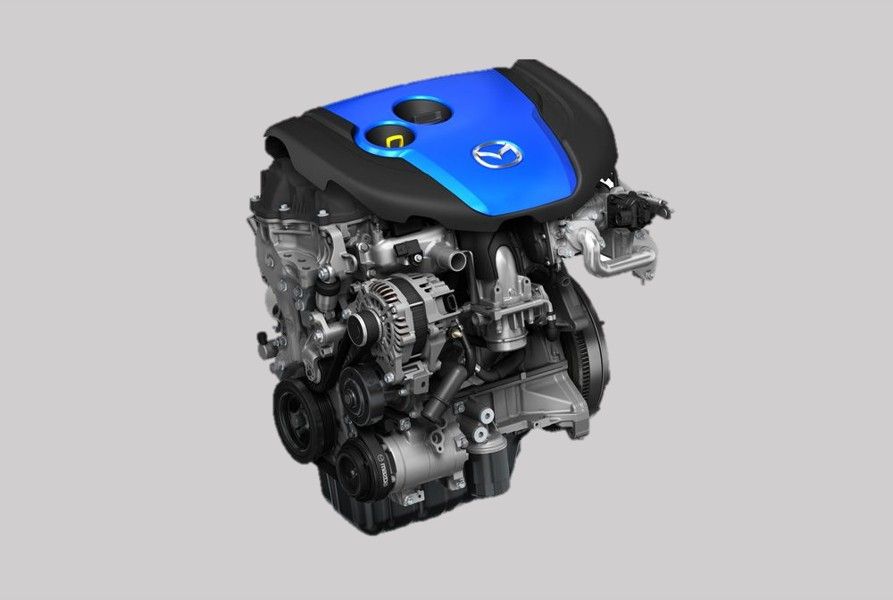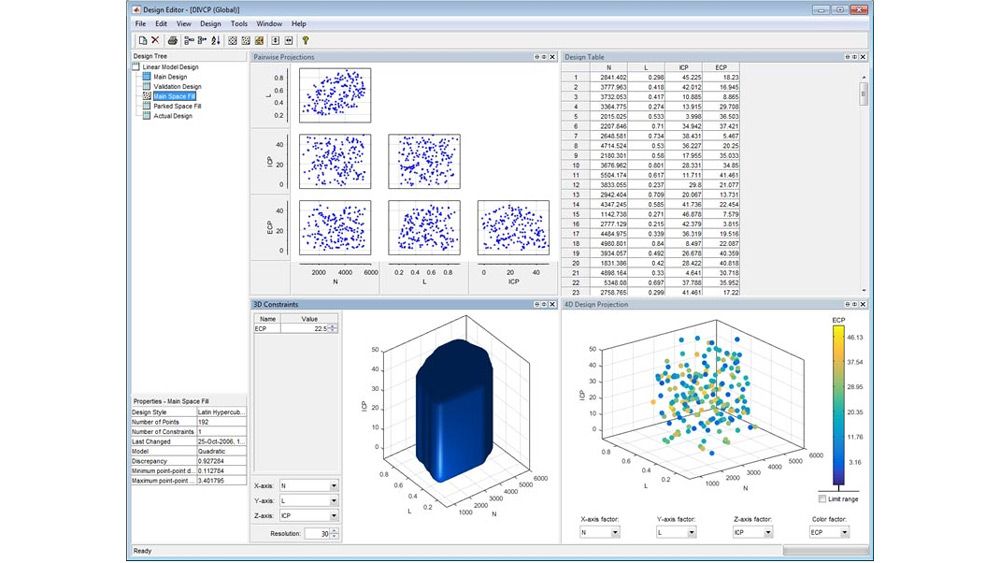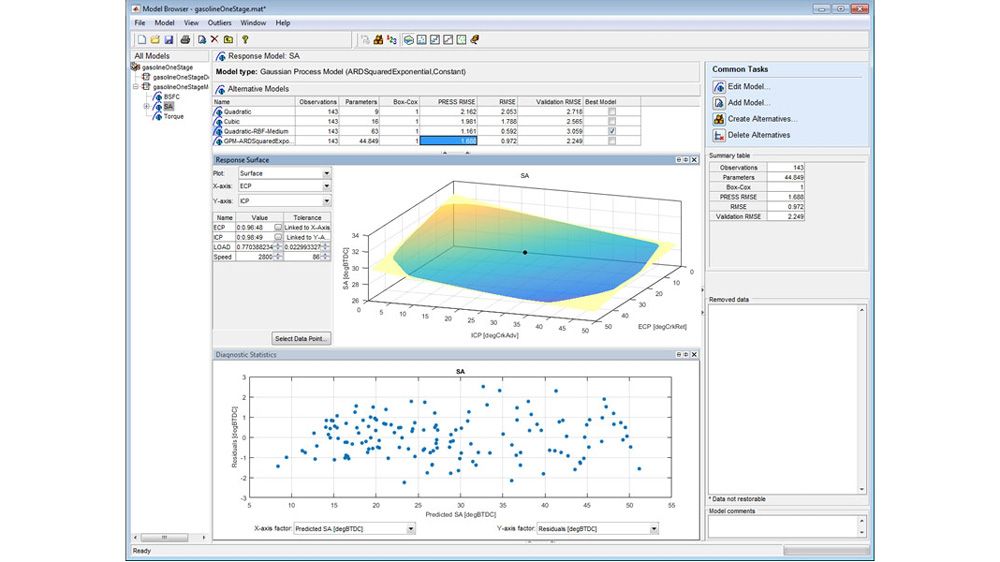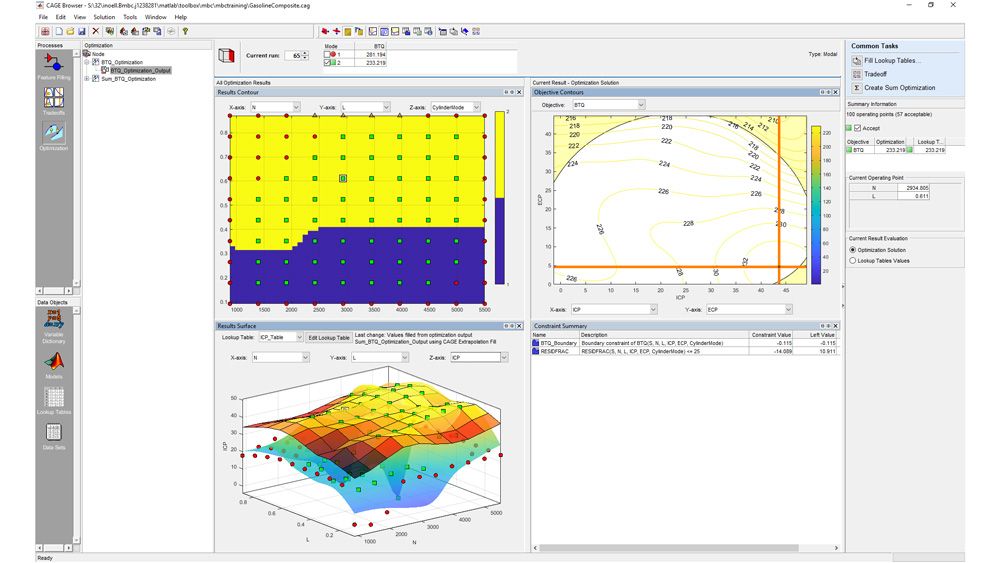Model-Based Calibration Toolbox provides apps and design tools for modeling and calibrating complex nonlinear systems. It can be used in a wide range of applications, including powertrain systems such as engines, electric machines, pumps, and fans, as well as nonautomotive systems such as jet engines, marine hydrofoils, and drilling equipment. You can define optimal test plans, automatically fit statistical models, and generate calibrations and lookup tables for high-degree-of-freedom systems that would require exhaustive testing using traditional methods. Using the toolbox apps or MATLAB functions, you can automate the model fitting and calibration process.
Models created with Model-Based Calibration Toolbox can be exported to Simulink to support control design, sensitivity analysis, hardware-in-the-loop testing, and other simulation activities. Calibration tables can be exported to ETAS INCA and ATI Vision.
Calibration Applications
Model and calibrate powertrain components to optimize performance.
Calibration Workflow

Design of Experiments
Characterize your system’s response with an efficient test plan that uses proven experimental designs, including space-filling designs, optimal designs, and classical designs.
Analyze and Fit Data to Statistical Models
Accurately represent your data with statistical models, including Gaussian process models, radial basis functions, and user-defined nonlinear models by using the MBC Model Fitting app.
Generate Optimal Calibrations
Maximize component efficiency across the entire operating range by generating optimal steady-state or transient calibrations for filling lookup tables using the MBC Optimization app.
